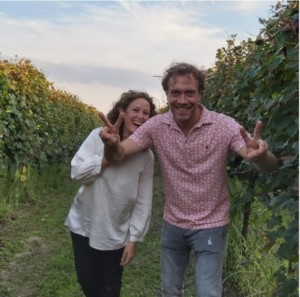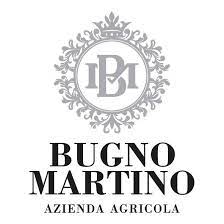Bugno Martino

Giuseppe Zavanella & Raffaella Merlin
About
Owners & winemakers: Giuseppe Zavanella & Raffaella Merlin
Vineyards: 10ha, all estate-owned
Vineyard management: Certified organic with some biodynamic practices
Soils: Alluvial silt, clay, and sand
Grapes grown: Salamino, Ancellotta, Grappello Ruberti, Chardonnay
Annual production: 20,000 bottles
Quick facts:
- Husband and wife Giuseppe and Raffaella are working to restore credibility to Mantuan Lambrusco.
- The Grappello Ruberti grape is the only autochtonous grape from Mantua: it was abandoned and thought lost until it was rediscovered by agronomist Ugo Ruberti, and was only officially recognized by the Italian government in 2013.
- The Rosso Matilde cuvée is named after Matilde di Canossa, one of the most powerful women in medieval Italy, known as the “forerunner of feminism.” She’s also credited with the “discovery” of Lambrusco: she was the first to instruct the monks to cultivate the Lambrusco grape varieties for wine.
- “Lambrusco is the wine of joy: people have to feel this sensation of happiness and sharing and we want them to feel part of a Lambrusco revolution. And while they taste our wines, they’ll say ‘Yes, this Lambrusco is a real wine.'” – Raffaella Merlin
Creating Bugno Martino was a dream come true for husband and wife Giuseppe Zavanella and Raffaella Merlin. Neither had backgrounds in wine: Giuseppe was a builder, and Raffaela worked in PR. When visiting small artisan wineries throughout Italy, they realized that Lambrusco was missing from this movement. For many years, it’s mainly been produced as a cheap, sweet wine by large industrial wineries, and “the real essence of its roots” has been lost, as Raffaella put it. “Our idea is to let the world know that a different kind of Lambrusco exists, and that is the real Lambrusco,” she explains. They planted their first vineyard in 2009 on an old family farm previously growing grain and wheat–they had no experience and no old family recipes to draw on, only their passion to restore credibility to their native region’s wine.
“First of all we are farmers,” Raffaella tells us. The estate is certified organic, and they incorporate biodynamic preparations and green manure/cover crops as well. With Mantua’s high humidity, it’s difficult to farm organically, but they learn more each year and are working to reduce the use of copper in the vineyards by using natural extracts instead. Winemaking is low intervention in order to showcase the healthy and expressive fruit that’s the result of their hard work in the vineyard. Some of the sparkling wines are made via the modern Charmat method, while others are made in the “ancient” style and refermented in bottle. All of the base wines are spontaneously fermented with native yeast, and grape must is used as the liqueur de tirage for both tank and bottle methods.

